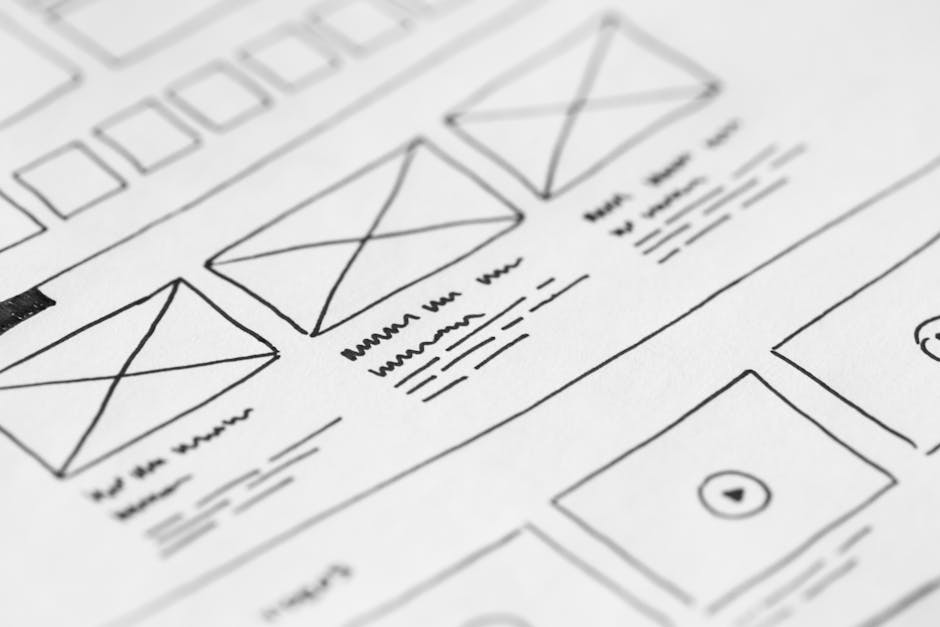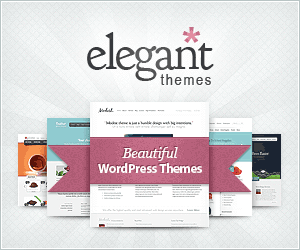User Experience Web Design: Top 5 Powerful Tips 2025
User experience web design is all about making websites that feel good to use. It’s about creating digital experiences where visitors can easily find what they need and enjoy the process. In today’s digital world, a well-thought-out web design isn’t just about looks. It combines functionality and strategy to boost user engagement and ultimately, conversions. Here are the essentials for success in user experience web design:
- Focus on the User: Prioritize user needs and behaviors for seamless navigation.
- Clear and Simple Layout: Avoid clutter; make web pages intuitive and easy to understand.
- Fast Loading Times: Keep users engaged with quick-loading pages.
- Responsive Design: Ensure your site works well on any device, from phones to desktops.
When done right, user experience web design can transform your website into a tool that consistently attracts and retains your ideal customers.
As Randy Speckman, founder of Randy Speckman Design in Kennewick, WA, I’ve spent years perfecting the craft of user experience web design. We’ve helped over 500 businesses thrive online by blending strategic brand growth with practical web design. Let’s dive deeper into understanding how a strategic approach to user experience can be a game-changer for your business.

User experience web design terms to learn:
– ecommerce conversion optimization tips
– mobile friendly website design
Understanding User Experience in Web Design
User experience (UX) in web design is about crafting websites that are not only visually appealing but also easy and enjoyable to use. It’s like creating a welcoming path for visitors to follow, ensuring they find what they need without any hassle.
Interaction Design plays a crucial role in this process. Imagine walking into a well-organized store where everything is easy to find. That’s what good interaction design aims to achieve on a website. It focuses on how users interact with the site, making sure that every click, scroll, or swipe leads to a satisfying experience.
Here’s why user experience is vital in web design:
-
User-Centric Approach: Everything starts with understanding the users. What do they need? What problems are they trying to solve? By focusing on these questions, designers can create websites that truly serve their audience.
-
Simplicity and Clarity: A cluttered website can overwhelm users. By keeping things simple and clear, designers ensure that users can steer effortlessly.

-
Consistent Interaction Patterns: Users like familiarity. By maintaining consistent interaction patterns, like buttons and menus, users can steer without confusion.
-
Feedback and Improvement: User feedback is gold. It helps designers understand what works and what doesn’t, leading to continuous improvement of the site.
A great example of successful user experience in web design is the case of Dubai College. They revamped their website to focus on user experience, making it more engaging for prospective families. By organizing content around key interests like academics and sports, they created a personalized experience that stood out from competitors.
Incorporating these principles into web design can transform a website from a simple digital space into an engaging, user-friendly experience. It’s about making sure that every step a user takes on your site feels intuitive and satisfying.
Key Elements of User Experience Design
Creating a user experience web design involves more than just visual appeal. It’s about crafting a seamless journey for users. Here are the five key elements that make up a strong UX design:
1. Strategy
This is the foundation. It begins with understanding the goals of both the business and the users. What does the business want to achieve, and what do users need? By aligning these goals, designers can create sites that satisfy both parties. This strategic alignment ensures the website not only attracts visitors but also converts them into loyal users.
2. Scope
Once the strategy is clear, the scope defines what the website will include. This involves deciding on the features and content that will be part of the site. For instance, will there be a blog, a shopping cart, or a contact form? Defining the scope helps keep the project on track and ensures that every element serves a purpose.
3. Structure
Think of the structure as the blueprint of the website. It’s about organizing the information and functionality logically. This involves creating a sitemap and user flows that map out how users will steer the site. A well-structured site ensures users can find what they need quickly and efficiently, much like a well-organized library.
4. Skeleton
The skeleton is where the design starts to take shape. It involves the layout of the site, focusing on placement of buttons, images, and text. The goal is to create a layout that guides users naturally through the site. This stage is critical for ensuring that the website is intuitive and easy to use.
5. Surface
Finally, the surface is the visual design of the site. This is where aesthetics come into play. Colors, fonts, and images are chosen to create an emotional connection with users. The surface design should reflect the brand’s personality and make the site appealing without sacrificing usability.
These elements work together to create a cohesive user experience. By focusing on strategy, scope, structure, skeleton, and surface, designers can build websites that are not only beautiful but also functional and user-friendly. This layered approach ensures that every aspect of the design contributes to a positive user experience.
The Role of User Research in UX Design
User research is the backbone of effective user experience web design. It helps designers understand who their users are and what they need. This understanding shapes every decision in the design process and ensures that the final product is both useful and enjoyable.
User Research
Imagine trying to build a house without knowing what the occupants need. Would they want a big kitchen or a cozy living room? User research answers similar questions for web design. It involves gathering data about users through interviews, surveys, and observation. This data helps in understanding users’ behaviors, motivations, and pain points.
John Donne once said, “You can only understand people if you feel them in yourself.” This empathy is crucial in user research. By putting themselves in users’ shoes, designers can anticipate challenges and create solutions that meet users’ needs.
Creating Personas
Once user research is conducted, the next step is to create personas. These are fictional characters that represent key user groups. Personas are based on real data, capturing users’ goals, challenges, and preferences. They help the design team keep the user in mind throughout the project.
For example, a persona for a travel website might be “Emma,” a 30-year-old trip seeker who loves budget travel. Understanding Emma’s needs helps designers tailor the website’s content and features to provide her with the best experience.
User Testing
User testing is like a dress rehearsal for a website. Before going live, real users interact with the site to identify any issues. During these tests, designers observe how users steer the site and gather feedback. This process highlights areas that need improvement and ensures the site is intuitive and user-friendly.
User testing should be ongoing. As consumer habits and technology evolve, so should the website. Regular testing helps keep the design relevant and effective.
By investing in user research, creating personas, and conducting user testing, designers can create websites that truly resonate with users. This approach not only improves user satisfaction but also drives business success.
Enhancing User Experience with Visual Design
When it comes to user experience web design, visual design plays a crucial role. It’s not just about making a website look pretty; it’s about creating an emotional connection with users and guiding them through an intuitive journey.
The Power of Visual Design
Visual design is more than colors and fonts. It’s about crafting a cohesive and engaging experience that speaks to users on an emotional level. A well-designed website can evoke feelings of trust, excitement, or curiosity, depending on the intended message.
For instance, the redesign of Dubai College’s website aimed to create a memorable experience by tailoring the homepage content to a child’s interests, setting it apart from competitors. This approach not only modernized the site but also engaged prospective families on a personal level.
Emotional Design
Emotional design is about understanding the feelings users experience when interacting with a website. It’s about ensuring that every visual element, from images to typography, contributes to a positive emotional response.
Dr. Donald Norman, a pioneer in user-centered design, emphasized the importance of creating designs that resonate emotionally with users. By focusing on how users feel, designers can create experiences that users will remember and love.
Aesthetics and Functionality
Aesthetics are important, but they should never compromise functionality. A beautiful website that’s hard to steer fails its users. The key is to balance aesthetics with usability to create a seamless experience.
Consider how websites like Awwwards showcase designs that are both visually stunning and easy to use. They serve as examples of how to merge aesthetic appeal with functional design effectively.
Visual Design Best Practices
- Consistency: Use consistent colors, fonts, and styles across the site to create a unified look.
- Hierarchy: Guide users’ eyes with visual hierarchy, highlighting important elements like calls to action.
- Whitespace: Don’t overcrowd the design. Use whitespace to let elements breathe and improve readability.
- Responsive Design: Ensure the site looks great on all devices, from desktops to smartphones.
By focusing on visual and emotional design, you can improve the user experience, making your website not only functional but also delightful and engaging for your audience.
User Experience Web Design Best Practices
When designing a website, it’s crucial to focus on creating a user experience web design that prioritizes usability, accessibility, and responsive design. These elements ensure that all users can steer your site easily, regardless of their device or personal limitations.
Usability: Making Navigation a Breeze
Usability is all about making your website easy to use. When users visit your site, they should be able to find what they need quickly and effortlessly. Here are some key principles to keep in mind:
-
Intuitive Navigation: Use clear labels and logical menu structures. Whether it’s a hamburger menu on mobile or a traditional bar on desktop, navigation should be straightforward (source).
-
Fast Load Times: A slow website can drive users away. Ensure your site loads within 4 to 6 seconds to keep users engaged and improve search engine rankings.
-
Clear Calls to Action: Guide users through your site with clear and concise calls to action. Microcopy can play a vital role in directing users effectively (source).
Accessibility: Welcoming All Users
Accessibility ensures that everyone, including people with disabilities, can use your website. This expands your audience and fulfills ethical and legal standards:
-
Screen Reader Compatibility: Design your site to work well with screen readers. Use descriptive alt text for images and ensure your content is structured with proper headings and lists (source).
-
Keyboard Navigation: Make sure users can steer your site using only a keyboard. This is crucial for those who cannot use a mouse.
-
Color Contrast: Ensure sufficient contrast between text and background colors to make content readable for those with visual impairments.
Responsive Design: Adapting to All Devices
With 58% of web traffic coming from smartphones, responsive design is non-negotiable. Your website should look and function well on any device:
-
Fluid Layouts: Use flexible grids and layouts that adjust to different screen sizes. This ensures a seamless experience whether users are on a desktop, tablet, or phone.
-
Media Queries: Implement media queries to apply different styles based on the device’s characteristics, like screen width.
-
Touch-Friendly Elements: Ensure buttons and links are large enough to be easily tapped on touchscreens.
By integrating usability, accessibility, and responsive design into your web design strategy, you create a user-friendly experience that caters to a diverse audience. This not only improves user satisfaction but also boosts engagement and conversions.
Frequently Asked Questions about User Experience Web Design
What is user experience in web design?
User experience in web design is all about how a person feels when interacting with a website. It’s not just about the look, but how easy and enjoyable it is to use. User experience web design focuses on creating websites that are simple to steer and meet the users’ needs. This involves making sure users can find information easily and complete tasks without frustration.
A well-designed user experience considers every interaction a user has with the site, from clicking a button to filling out a form. It’s about ensuring that the digital journey is smooth and intuitive, making users feel comfortable and satisfied.
What are the 5 elements of user experience design?
User experience design is like building a house. You need a solid plan and structure before you think about the paint colors or furniture. Here are the five elements:
-
Strategy: This is the foundation. It’s about understanding what the users need and what the business wants to achieve. You set goals that guide the whole design process.
-
Scope: This is where you decide what features and functions the website will have. It’s like choosing what rooms your house will have.
-
Structure: This is the blueprint. It’s about organizing the content and deciding how users will steer through the site. You map out the user flows and information architecture.
-
Skeleton: This is the layout. It’s about arranging elements on each page, like headings, images, and buttons, to guide users through their tasks.
-
Surface: This is the final layer. It’s about the visual design that users see. You choose colors, fonts, and graphics that create an appealing look.
These elements work together to create a cohesive and effective user experience.

How does UX design differ from UI design?
UX design and UI design are like two sides of the same coin. They both aim to create a great digital experience, but they focus on different aspects:
-
UX Design (User Experience): This is all about the overall feel of the product. UX designers focus on understanding the users and ensuring that the product meets their needs. They work on the strategy, scope, structure, and flow of the website.
-
UI Design (User Interface): This is about the look and feel of the product. UI designers focus on the visual elements that users interact with, such as buttons, icons, and menus. They ensure that the interface is visually appealing and easy to use.
In simple terms, UX is about making the experience smooth and enjoyable, while UI is about making it visually engaging and intuitive. Both are essential for creating a successful website that users love to visit.
Conclusion
At Randy Speckman Design, we understand that a website is more than just a digital presence—it’s a powerful tool for conversion and marketing. Our expertise in user experience web design ensures that your website not only looks good but also performs exceptionally.
In today’s digital world, conversion optimization is key. By focusing on user experience, we help businesses turn visitors into loyal customers. A well-designed user experience leads to higher engagement, fewer bounce rates, and increased conversions. We know that every interaction counts, and our designs are custom to make each one as smooth and intuitive as possible.
Our approach combines strategic digital marketing with cutting-edge web design. We prioritize usability, accessibility, and responsive design to create websites that meet the needs of all users. This comprehensive approach ensures that your website not only attracts visitors but also keeps them coming back.
Ready to improve your website’s performance? Explore our conversion rate optimization services to see how we can help you achieve your business goals. Let’s work together to create a user experience that truly marks the spot.




